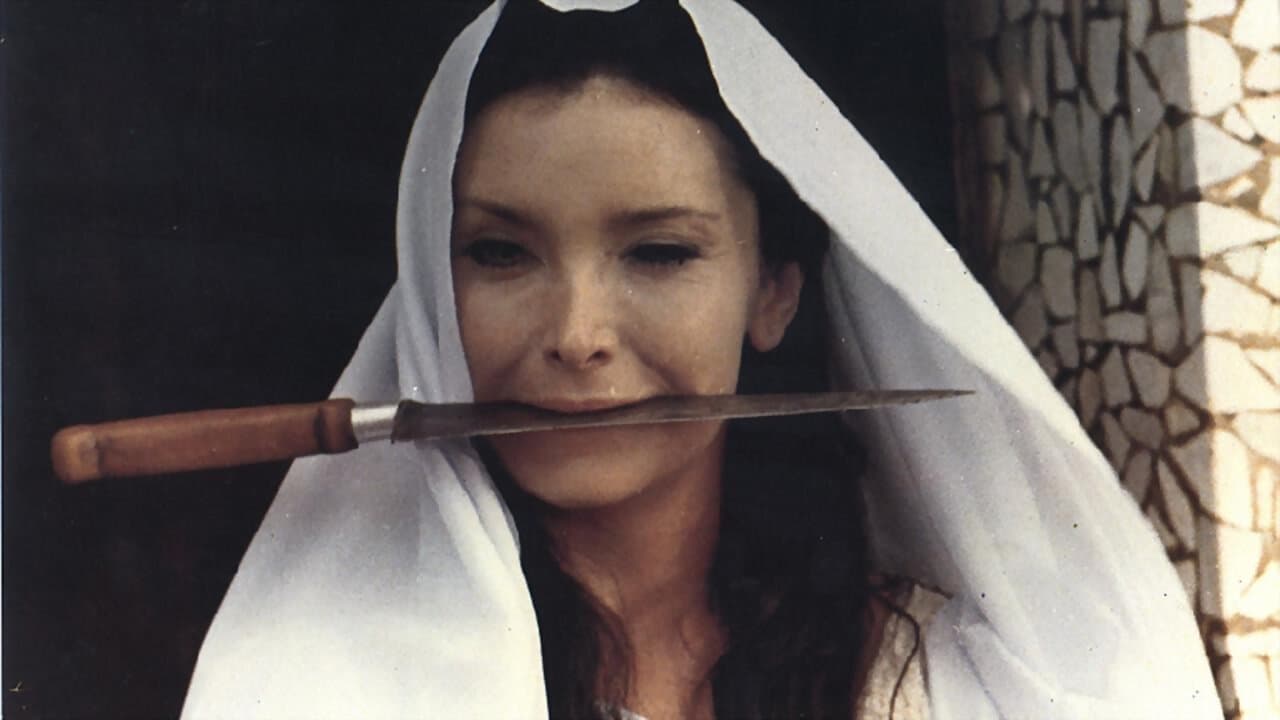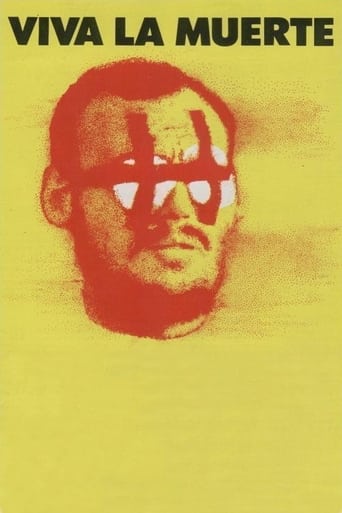

n my opinion it was a great movie with some interesting elements, even though having some plot holes and the ending probably was just too messy and crammed together, but still fun to watch and not your casual movie that is similar to all other ones.
... View MorePretty good movie overall. First half was nothing special but it got better as it went along.
... View Morean ambitious but ultimately ineffective debut endeavor.
... View MoreAfter playing with our expectations, this turns out to be a very different sort of film.
... View MoreFernando Arrabal is an author of books and plays. He was part of the panic movement of theater, which also included Alejandro Jodorowsky and Roland Topor. In fact, in the beginning of "Viva La Muerte" we see some morbidly surreal drawings by Topor. The film is semi-autobiographical and takes place during the Franco era in Spain during World War II. Fando witnesses his father seized by soldiers. Fando thinks that his father is dead. Later he finds out his father is still alive and that his mother turned him in to authorities for suspicion of communist activities. The film shows how war affects children. Fando has many grotesque, sadistic, surreal daydreams about his father being tortured by the fascist army. The daydream sequences are done in bright neon filters, with strange music and sound effects, even a children's song. The film makes a strong anti-war statement, and is filled with satirical and blasphemous imagery. Some of the images are extreme, including a real cow slaughter and Fando's mom torturing his dad. She even takes a dump on his head. The extended torture sequences may remind some of what the U.S has been doing to Iraqi prisoners. Although the film is brutal at times, it still is beautiful in its subversive poetry. "Viva la Muerte" is a masterpiece of surrealism and makes an important statement about the evils of war.
... View MoreA wife's betrayal of her husband, leads to a son's nightmares about his father's disappearance, torture and murder at the hands of a totalitarian state.His visions are made literal with brutal, grotesquely eschatological and scatological imagery. Do not expect linear narrative; the feverish imaginings of the boy are the plot, much like paging though Goya's "The Disasters of War", and "Caprichos", or a long leisurely look at one of Bosch's more apocalyptic paintings, to which there are visual allusions in the film, the narrative is driven by episodes of ever- increasing malaise, which give it its power.A special treat, and little masterpiece of horror all unto itself, are the beginning credits, with a haunting song sung by children over monstrous, but beautiful, drawings by Roland Topor.Invite the whole family over for a screening; you'll forever after feel like a functional family unit.
... View MoreDuring the Spanish Civil War young boy named Fando is forced to watch as Garcia Lorca is executed by a taunting Fascist firing squad.He keeps asking his mother what happened to his father,and eventually learns that his mother betrayed him to the Franco government because of his unspoken leftist ideas.Fando imagines bizarre scenarios where his father is tortured and mutilated.Many of his visions present his mother as a monster who gouges out his father's eyes,or makes love to his captors in front of him,in addition to other gruesome and scatological horrors.Fando also shows signs of sexual interest in his libidinous aunt Clara and a neighbor girl,Thérèse,as he lives a miserable existence acting out the cruelty of his mother with small cruelties of his own.Fernando Arrabal is a well-known Spanish surrealist and "Viva la Muerte" is his first and most famous piece of work.The film has its share of shocking and unpleasant moments-the defecation scene and the bull slaughter moment especially come to my mind.Many of the hallucinatory scenes of violence,that include the father's head being stomped on by horses,a priest's genitals being cut off,and imagined sexual liaisons involving Fando's mother,were filmed on videotape,distorted via the use of colour filters and transferred to film.So if you liked this one I'd also recommend "Sweet Movie" and "The Cremator".7 out of 10.
... View MoreContains spoiler Finally, the most celebrated film of playwright / filmmaker Fernando Arrabal has come to DVD! Arrabal's works have inspired many other great filmmakers, especially his protege, Alejandro Jodorowsky, who made a semi-sequel to Viva La Muerte called Fando & Lis.Viva La Muerte (Long Live Death) is set in 1930's Spain (Arrabal had to flee to France to avoid arrest) just after Franco's fascists won the Spanish Civil War. 11-year-old Fando lives with his mother in a small village. His father is a heroic communist revolutionary who was arrested and executed by the fascists.Fando's life changes forever when he learns that his father was turned in to the authorities by his fanatically religious mother who despises communists. What's more, his father may still be alive and imprisoned, despite his mother's insistence that her husband is dead. Fando sets out to find the truth.The movie opens with a montage of violent images that appear to have been drawn by a child. During this opening credit sequence, a cute French song plays that is sung by children. The DVD producer elected not to subtitle this song in English - a bad decision, because the song sets the tone for the whole movie, and parts of it are replayed throughout the film.Basically, this is a surrealist allegory equating organized religion with fascism, both of which the filmmaker finds perverse. Indeed, organized Christianity is inherently fascist in nature, especially Catholicism, which is Fando's mother's religion. The Catholic Church preaches a doctrine of blind obedience to the clergy, and it has conducted its own genocidal holocausts - the Crusades and the Inquisitions.Viva La Muerte mixes straightforward narrative with color-tinted surreal dream sequences, although there are a lot of surreal images throughout the entire film. Many of these images are quite shocking, and resulted in the movie being banned in several countries and heavily censored in others. This DVD features the complete, uncut version of the film.Fando's mother - who symbolizes organized religion - dotes on her son and thinks of herself as a saint for suffering through a marriage to a godless communist. She believes that she did the right thing by turning in her husband. But it's obvious that she has incestuous desires for her son and may have betrayed her husband out of sick jealousy - in flashbacks, we see that Fando's father was a good man who had a close relationship with Fando.In one truly disturbing scene, Fando's mother strips topless and orders him to flog her as atonement for sin. At first, Fando can't bring himself to hurt his mother, but when she insists, he beats her, and her reaction is almost orgasmic. Then, as if subconsciously avenging his father, Fando keeps increasing the intensity of the beating, and won't stop when his mother tells him to. Finally, she grabs his crotch and he shrieks in pain and stops beating her.That's just one of many shocking images in this film. The surreal dream sequences veer from hauntingly beautiful to ugly and disgusting. One sequence finds Fando imagining that his mother is tormenting his father in prison. She laughs at him, spits on him, then tops it off by defecating on him.I could go on forever describing the images in this film, their symbolism, and allegorical meaning, but that would take away from your viewing enjoyment. Ultimately, this is a film about searching for truth in a world of lies. It's also about how tyranny lurks everywhere - in government, in religion, and even in a mother's love. And, like the saying goes, the truth will set you free
... View More